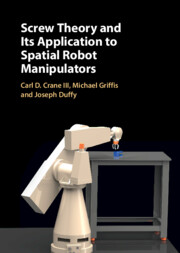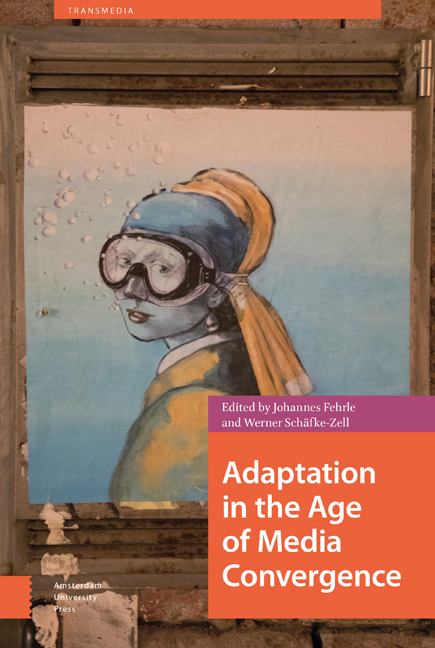Refine search
Actions for selected content:
1206 results in Computer Graphics, Image Processing and Robotics
Appendix A Derivation of Cylindroid Equations
-
- Book:
- Screw Theory and its Application to Spatial Robot Manipulators
- Published online:
- 08 September 2022
- Print publication:
- 15 September 2022, pp 202-206
-
- Chapter
- Export citation
3 - Statics of a Rigid Body
-
- Book:
- Screw Theory and its Application to Spatial Robot Manipulators
- Published online:
- 08 September 2022
- Print publication:
- 15 September 2022, pp 66-107
-
- Chapter
- Export citation
Preface
-
- Book:
- Screw Theory and its Application to Spatial Robot Manipulators
- Published online:
- 08 September 2022
- Print publication:
- 15 September 2022, pp xi-xiv
-
- Chapter
- Export citation
7 - Acceleration Analysis of Serially Connected Rigid Bodies
-
- Book:
- Screw Theory and its Application to Spatial Robot Manipulators
- Published online:
- 08 September 2022
- Print publication:
- 15 September 2022, pp 181-201
-
- Chapter
- Export citation
6 - Singularity Analysis of Serial Chains
-
- Book:
- Screw Theory and its Application to Spatial Robot Manipulators
- Published online:
- 08 September 2022
- Print publication:
- 15 September 2022, pp 168-180
-
- Chapter
- Export citation
Frontmatter
-
- Book:
- Screw Theory and its Application to Spatial Robot Manipulators
- Published online:
- 08 September 2022
- Print publication:
- 15 September 2022, pp i-iv
-
- Chapter
- Export citation

Screw Theory and its Application to Spatial Robot Manipulators
-
- Published online:
- 08 September 2022
- Print publication:
- 15 September 2022

Adaptation in the Age of Media Convergence
-
- Published by:
- Amsterdam University Press
- Published online:
- 21 November 2020
- Print publication:
- 01 October 2019
-
- Book
- Export citation
Notes
-
- Book:
- Human-Robot Interaction
- Published online:
- 20 February 2020
- Print publication:
- 07 May 2020, pp 252-252
-
- Chapter
- Export citation
Frontmatter
-
- Book:
- Human-Robot Interaction
- Published online:
- 20 February 2020
- Print publication:
- 07 May 2020, pp i-iv
-
- Chapter
- Export citation
2 - What Is Human–Robot Interaction?
-
- Book:
- Human-Robot Interaction
- Published online:
- 20 February 2020
- Print publication:
- 07 May 2020, pp 6-17
-
- Chapter
- Export citation
9 - Research Methods
-
- Book:
- Human-Robot Interaction
- Published online:
- 20 February 2020
- Print publication:
- 07 May 2020, pp 126-160
-
- Chapter
- Export citation
3 - How a Robot Works
-
- Book:
- Human-Robot Interaction
- Published online:
- 20 February 2020
- Print publication:
- 07 May 2020, pp 18-40
-
- Chapter
- Export citation
References
-
- Book:
- Human-Robot Interaction
- Published online:
- 20 February 2020
- Print publication:
- 07 May 2020, pp 209-246
-
- Chapter
- Export citation
7 - Verbal Interaction
-
- Book:
- Human-Robot Interaction
- Published online:
- 20 February 2020
- Print publication:
- 07 May 2020, pp 98-113
-
- Chapter
- Export citation
1 - Introduction
-
- Book:
- Human-Robot Interaction
- Published online:
- 20 February 2020
- Print publication:
- 07 May 2020, pp 1-5
-
- Chapter
- Export citation
12 - The Future
-
- Book:
- Human-Robot Interaction
- Published online:
- 20 February 2020
- Print publication:
- 07 May 2020, pp 201-208
-
- Chapter
- Export citation
5 - Spatial Interaction
-
- Book:
- Human-Robot Interaction
- Published online:
- 20 February 2020
- Print publication:
- 07 May 2020, pp 69-80
-
- Chapter
- Export citation
Index
-
- Book:
- Human-Robot Interaction
- Published online:
- 20 February 2020
- Print publication:
- 07 May 2020, pp 247-251
-
- Chapter
- Export citation
10 - Applications
-
- Book:
- Human-Robot Interaction
- Published online:
- 20 February 2020
- Print publication:
- 07 May 2020, pp 161-184
-
- Chapter
- Export citation
